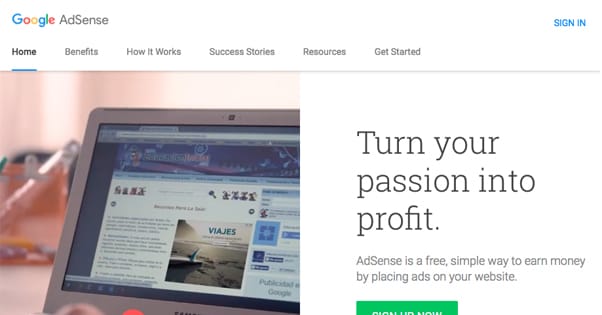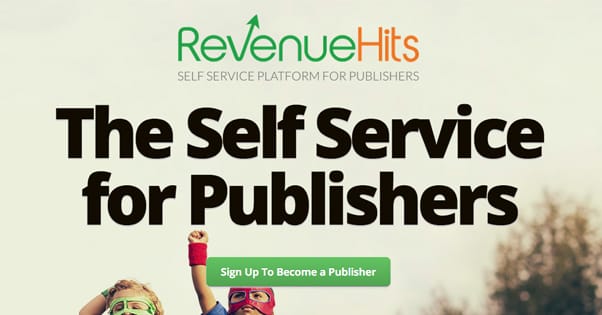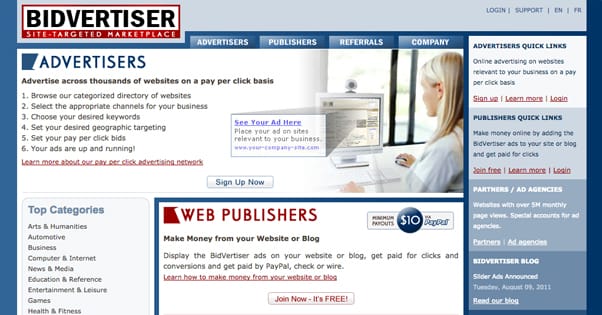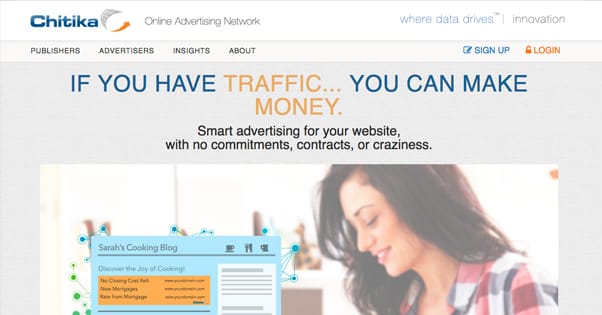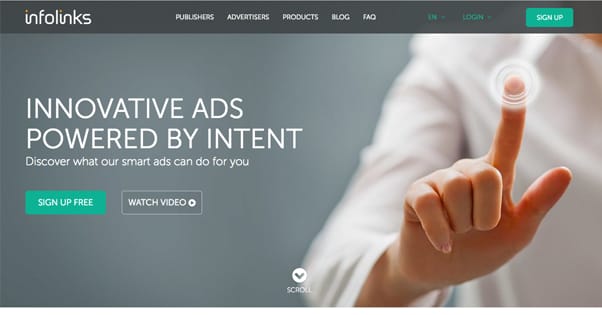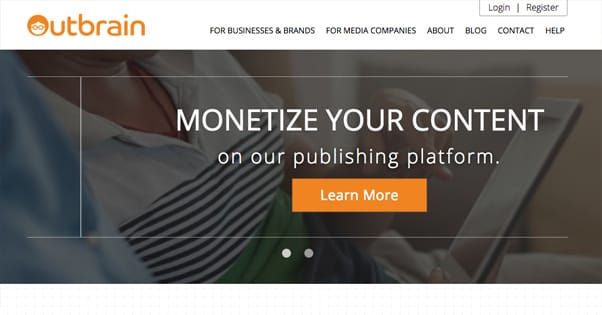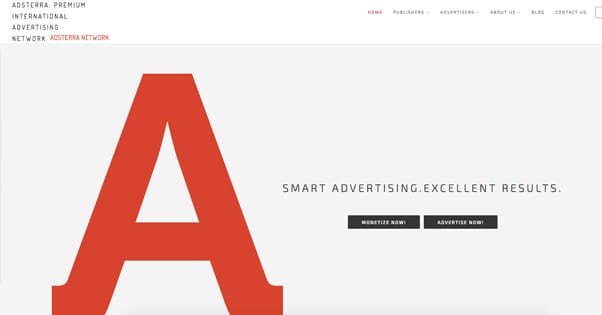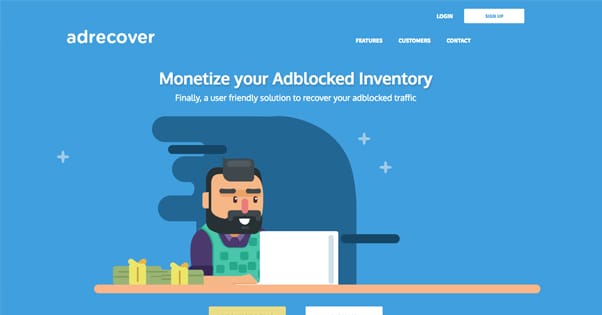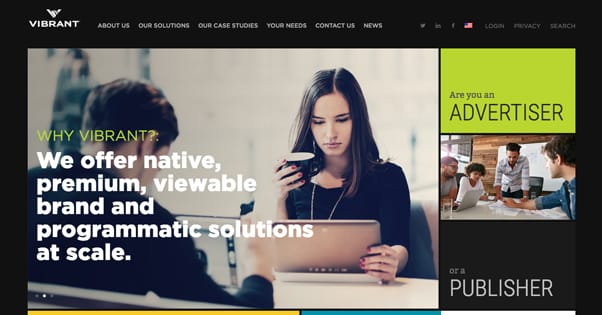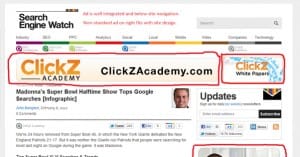The 10 Best Ad Networks to Monetize Your Blog
Published by Kenny Novak • Monetization • Posted October 21, 2016 ContentPowered.com
ContentPowered.com
If you’re looking to make money from a blog, you’re becoming a publisher for an ad network of some kind. Advertisers will pay you to put ads on your blog and refer traffic back through to them. It’s not the most lucrative possible way to make money online, but it’s by far the easiest, and requires little more than content and traffic to be successful.
I’m going to skip all of the justifications, the explanations, and the paragraphs convincing you why you should sign up and run ads on your blog. Instead, I’m just going to give you the ten best ad networks I’ve found, along with some information about them. Here we go!
1: The Usual Favorite Google AdSense
AdSense is Google’s advertising platform. Advertisers from around the world use it to put ads both directly in Google Search Results and on websites using AdSense, as part of the Google Display Network. As a publisher, you’ll be part of that network, once you sign up and get approval.
The trick here is getting approval. Google is strict about who can become part of their display network. As a result you need to meet stringent criteria. Your site needs to be in the right kind of niche – so no adult, no pharmacy, etc – and it needs to have sufficient content. It needs to have a user friendly design and can’t show evidence of black hat SEO practices. It needs to have pages for privacy policy, for contact info, and for a company profile. It also shouldn’t have other ads already in place, and can’t rely entirely on paid traffic.
On the plus side, Google ads are one of the most ubiquitous and trusted sources of ads available. They may not be the highest paying option, but you know Google isn’t going to misreport or skim views to pay you less than you’re actually earning.
2: The Beginner’s Boost RevenueHits
I put this network at the top not because it’s the best AdSense alternative, but because it’s an excellent place for new blogs to start. You can sign up with just about any website that meets their minimum criteria, which are essentially just topic filters and the usual “no malicious sites or illegal content” caveats. You don’t need a specific amount of traffic or content to apply. They also boast a 100% fill rate, so you never have ad slots going empty due to a dearth of advertisers.
On the other hand, RH is a CPA network, which means they only charge their advertisers when an action occurs. Consequently, as a publisher, you only get paid when a user who clicks on your ad actually converts, for whatever that conversion may be. It could be an affiliate purchase, a mailing list signup, or something in between.
Of course, since an action is harder to get than traffic, views, or link clicks, the pricing is higher. They will pay anywhere from $10 to $50 per action depending on the advertiser and the action. This is some of the highest single action payouts you can find short of affiliate marketing.
3: The One Size Fits All Bidvertiser
Bidvertiser is one of the oldest networks out there, and it has remained a good option for new bloggers and established publishers alike. They do this primarily through sheer variety. They have a wide range of different ad formats, from banners and text ads to pop-unders and more. They also have a very low minimum payout compared to many advertising networks, requiring only $10 in your account to cash out via PayPal, or $20 for check. Bank transfers are the standard $50, though.
The downside of Bidvertiser is that they’re so old that they have a huge number of mediocre or downright terrible advertisers paying for ads. This means two things. First, it means the ads aren’t going to pay you much per view or click. This means you really benefit from having large volumes of traffic, at which point there are better networks to choose. As such, I recommend this for starting and mid-range bloggers, after which you can switch to something else.
The other downside is that a lot of the ads that will be served are, to put it bluntly, not great. If you don’t keep a good watch on what’s displaying on your site, you might find some pretty spammy content.
4: The Old Standby Chitika
Chitika is another very old ad network, and was at one point one of the best alternatives to AdSense out there. However, since those old days, two things have happened. First, other ad networks have cropped up, many of which have more advanced features and better rates than Chitika. Second, Chitika has somewhat stagnated. They haven’t made the sort of technological and network improvements necessary to remain the top dog. That said, they’re still relatively good and deserve a spot on this list.
Like RevenueHits, Chitika does not have a minimum traffic requirement. Any new blogger can start up.
There are two major cons to running with Chitika. The first is that they only monetize search traffic. They simply don’t want to deal with the fraud that comes from paid traffic, so they refuse to monetize it at all. They also won’t monetize traffic coming from social networks either, meaning if you’re primarily a social brand, you’re out of luck here.
The second major con is their zero tolerance policy. Any invalid click or attempt at click fraud, even inadvertent, will permanently ban you from the platform. You have no appeal and you can’t re-register. You’re simply done.
5: The Textual Alternative Infolinks
Infolinks is a primarily text ad system. This means you can use them alongside another form of advertising, primarily display ads, without conflict. Most notably, you can use Infolinks alongside Google AdSense without issues.
Infolinks works with a sort of dynamic generation. You don’t set up specific ad slots and get them filled with ads from the network. Instead, you put a script on your pages and Infolinks scans your content. They look for keywords salient to the topic of your site and of the post, and they will automatically create text links over certain keywords. These links display small ads on hover, which entice the user to click to read more, as some kind of informational or supplementary addition to the post. It’s not quite native advertising, but it’s not bad either.
The major cons of Infolinks are the high minimum payout of $50, and the fact that only their text ads are really worthwhile. They have other forms of advertising, but those will conflict with display ads. They also conflict with your own text ads, for example if you’re experimenting with affiliate marketing. The double layer of text ads might trip Google’s too-many-ads filters and hurt your SEO.
6: The Native Solution Outbrain
Outbrain is used here as a bit of a stand-in for several native advertising systems, including Taboola and Adblade. All of these systems work in more or less the same way; the only difference is minor specifics you can research on your own.
The way these networks work is by creating what is called a native advertising box on your site. You’ve seen these all over. They tend to be in the footer or on one side of the content, and they’re filled with thumbnails, titles, and short descriptions of pieces of content. However, unlike “related posts” widgets, these links lead to websites that paid to have that content put into rotation.
The big benefit here is that the ads are customized to look like related posts on your site. That’s what native advertising is.
The primary downside to all three of these native advertising networks is the steep entry requirements. Taboola and Adblade require at least 500,000 monthly pageviews. Outbrain requires much, much more, at 10,000,000 monthly pageviews. In other words, these are excellent options for huge blogs, but not so much for newcomers.
7: The Sweet and Simple Adsterra
Adsterra is a global advertising network that is a relative newcomer to the list, and has been growing swiftly. They have a lot of nice modern features for publishers, however, making them a great choice. They have relatively high rates compared to many advertisers. They have a wide variety of formats, including banners, pop-unders, text links, sliders, interstitials, lightboxes, and more. They also offer real time statistics and a guarantee that their ads will not serve malicious content or otherwise harm their publishers. They have view, click, and action-based ads, all of which pay quite well.
As you might expect, with a network that offers high payments and additional benefits, there’s a catch. In this case, the catch is their monthly traffic requirements. You’re not looking at Outbrain-level requirements, at least, but you do still need at least 300,000 monthly views on your site.
8: The Recovery Option AdRecover
AdRecover is a novel and interesting idea, and a sign of the ever-ongoing arms race between ad blocking software and advertising platforms. They are a specific advertising network that work around ad blockers, which are becoming increasingly popular on the modern internet. They claim that their ads are visitor friendly and unobtrusive, which make them better for the user experience. Since intrusive and obnoxious ads are the number one reason for users to pick up ad blockers, this is an interesting idea.
AdRecover also includes a feedback mechanism. If a user unblocks ads and finds one they don’t like, they can report it and opt out of that advertiser entirely. This is still better than returning to blocked ads, however.
AdRecover has fairly low requirements, but they’re also not very big. They only have 1,300 or so publishers and an unstated number of advertisers. They also primarily pitch Indian sites as their prime publishers, so your demographics might not match. Additionally, you only really benefit from them if you have a significant number of users running an ad blocker, which isn’t always the case.
9: The Best of All World Vibrant
Vibrant Media is a great middle ground for many of the above options. They have a wide variety of ad types, including the usual display and text ads, pop ads, lightboxes, mosaics, and even the brand canvas, which you see as the “background image” advertisements on sites like IGN and Cracked. On top of that, they offer native advertising like Outbrain, Taboola, and the last entry on the list under this one. However, unlike those others, they also have no minimum traffic requirements. You need to meet content standard requirements, but that’s it.
Additionally, ads are responsive, so they work on mobile as well as desktop sites without needing different solutions. And, as if that wasn’t enough, they work well with other networks. You can use just their native ads and brand canvas without interrupting banners or text ads from other sources. All of this with some decent pay rates as well.
10: The Hail Mary RevContent
Last on the list is RevContent, which is a huge premium ad network with some very steep requirements. They are a content recommendation engine similar to Outbrain, and they hand pick all of their publishers. However, they also reject a stated 98% of applicants. They are, very much, an exclusive network to join. Don’t be surprised if the reject you.
The flip side to this steep entry requirement is their excellent pay. RevContent is perhaps one of the highest paying native advertising and content recommendation networks out there. They have fantastic conversion rates, primarily due to the highly vetted content in their network.
If you haven’t found a network worth looking into just yet, well, I can’t help you. There are plenty more out there, and plenty of lists like this one. Give them a look and recommend your favorite networks here. Maybe if I write a “10 more” article follow up to this one, I can include your suggestions.

